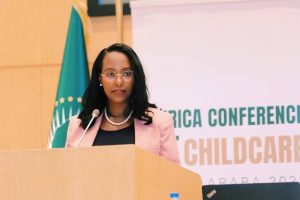
The word liberation has been conceptually adulterated over the last 50 years of the country’s history. Ethiopia, while being an independent country for thousands of years, has been flooded with political groupings and armed groups which were formed on ethnic lines based on basic historical grievances and maladministration of the pervious regimes in Ethiopia.
The politics of early 60s is once more haunting modern so called liberation movement and armed groups in Ethiopia in the wrong time and space, it is true that at the advent of the 1960s when many African countries have been under colonial subjugation, they have rightly established liberation movements to cement common forum for political freedom. However, it is interesting and quite incredible to observe that Ethiopian Governments have registered so many political organizations that the government called parties while they are actually not. They are and were fronts that were wrongly registered as parties while they are fronts that were fighting to liberate their own ethnic groups, the irony is from whom would they liberate any people or ethic group. That is why the world liberation in the Ethiopian context is an empty buzz word devoid of sense and sensibility.
Some of the liberation movements in the country are as old as 60 years and there is no liberation in sight. This has resulted from the facts that either the strategies for the “struggle” ate not clearly articulated and defined even among the fighters or there are no strategies or programs that are meant to show the pathways of their struggle.
Liberation movements and armed groups in Ethiopia have often not been successful due to a combination of structural, social, and geopolitical factors.
Ethiopia’s ethnic diversity has often meant that liberation movements represent specific ethnic or regional interests rather than a unified national agenda. This has led to fragmentation and challenges in forming cohesive, inclusive platforms that resonate broadly across the country. Ethnic-based agendas may gain traction locally but struggle to build broader alliances and legitimacy at a national level has been impossible. The Ethiopian government has typically maintained strong military and political responses to armed resistance, deploying considerable resources to curb these movements to ensure the rule of law and stability. Through extensive counterinsurgency measures, the government has managed to limit the influence and operational capacity of many groups, particularly through controlling territory and disrupting logistics.
Unlike some liberation movements in other countries, Ethiopian armed groups wish to foster relations with countries at the neighborhood who wish to use them or their own agenda of destabilizing the country. The Ethiopian government’s strategic relationships with regional and global partners have helped it gain support against these movements, making it challenging for armed groups to secure consistent funding, arms, or safe havens in neighboring countries.
Many of these groups have faced internal divisions and power struggle, weakening their organizational structure and limiting their ability to coordinate effectively.
The TPLF is a case at hand. Armed groups in Amhara are divided on zonal bases and seem to compete on the financial resources they receive from their supporters abroad. In Oromia, the groups are divided on zones of influence and seem to lose ground at the present. Leadership struggles, ideological splits, and infighting have been common, often resulting in fragmentation into smaller, less influential factions. These divisions reduce their negotiating power and impact on both political and military fronts. Despite government efforts for peaceful negotiations, the armed groups have failed to come up with any meaningful response.
Some groups that attempt to transition from armed struggle to political engagement often struggle with integration into the formal political landscape. Many face obstacles in gaining legitimacy, securing widespread public support, or engaging effectively in governance. Inadequate resources and limited capacity to adapt to nonviolent political frameworks further undermine their chances for success.
On the other hand, most of the armed groups in Ethiopia operate on donations from the diaspora which is quite irregular and mismanaged by the leaders of these groups. They try to fulfill their logistics needs and food through lootings and confiscation of public and private properties they come across. This puts into question the issue of the sustainability and clarity of the objectives for which they struggle and the strategic pathways they intend to pursue.
In addition, as they are organizationally fragmented and disorganized, they fall prey to the interests of groups that finance them from abroad making them disunited for unspecified period of time.
For instance in the Amhara region they use a catchword “we will enter Arat Kilo” with no specific strategy of political nature but only through guns. This makes their strategy not only futile but unlikely. Thus they remain destructive, parasitic and devoid of any reasonable political strategy, the armed groups in Oromia have no specific political ideology of their own but are merely interested in power sharing without even organizing themselves into a party through official registration. This has put the group in a state of limbo followed by huge number of deserters.
Some think that the current political imbroglio and unpredictable crisis would give the armed groups a breathing space as the government would concentrate on national security but this seems to be utterly groundless.
At this point in time, the fragmentary nature of the armed groups in Amhara and Oromia in particular have disabled them from coming up with a political agenda behind which their supporter can rally. They have some level of propaganda network but no solid political objective or strategy that could fit into some level of negotiations.
Even after the relative peace and stability that had prevailed in Tigray after the Pretoria Agreement, there is a bleak political situation in the region which if not properly handled could lead to some kind of civil war.
Armed groups in Ethiopia are often rooted in economically marginalized areas, where grievances may be widespread but resources for sustained operations are limited. Recruitment, logistics, and sustaining member support are challenging when local economies are weak, reducing the groups’ longevity and reach.
Additionally, many such movements struggle to offer a compelling economic alternative to existing governance, limiting popular support over time.
BY SOLOMON DIBABA
THE ETHIOPIAN HERALD FRIDAY 1 NOVEMBER 2024



